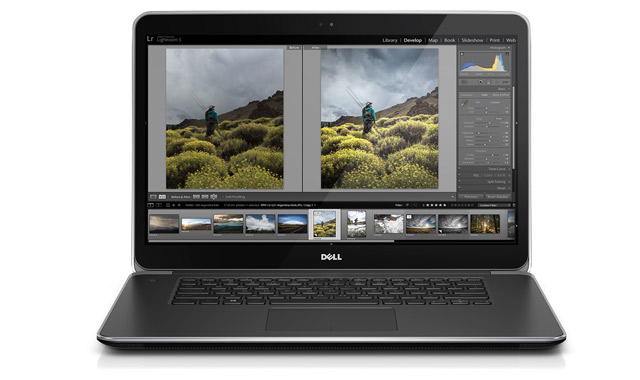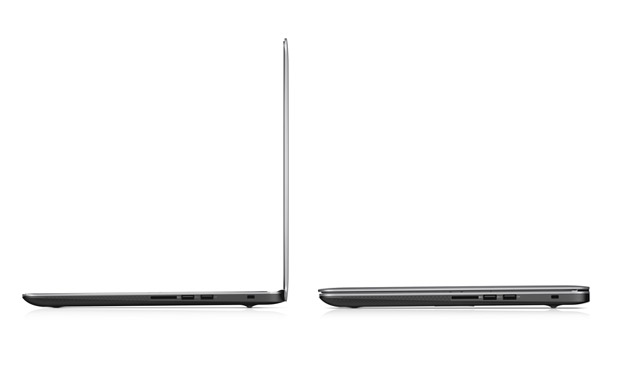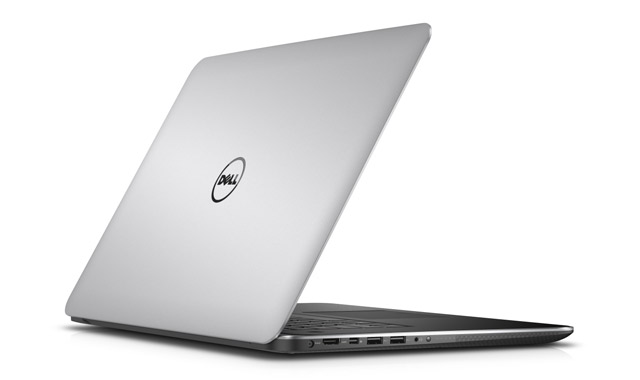
Dell’s Precision M3800 notebook is a workhorse that epitomises the desktop replacement computer. It features incredibly high-end hardware, with enhancements not often found in notebooks.
The US computer maker has the formula just right with this machine. Everything from the packaging to its sleek design oozes class with a minimalist look and feel more typical of Apple than PC makers.
One of the most notable features of the 1,8kg M3800 is its size. At just 8mm thick, it is the same width as the new 15-inch MacBook Pro with Retina display. The M3800 is targeting the same market — graphics and design professionals among them — but it has a quite a few more features to offer them that they won’t get with Apple’s high-end portable.
The M3800 is constructed from brushed aluminium and carbon fibre. The material that covers the keyboard palm rest feels like a hard rubber composite and is a great addition that makes the surface around the keyboard feel slightly soft to the touch.
The keyboard is another area where the M3800 impresses and, although it takes a little getting used to when moving from another notebook, it is a pleasure to type on.
Considering its size, it’s no surprise that Dell has not included an optical drive. Besides, few people need one in the era of cloud computing, and it’s easy to plug one in via USB if needed. And there are four USB ports on the M3800 — two more than the MacBook Pro. Three are USB 3 certified, while the other one is an older USB 2 port.

As with many modern Ultrabook PCs, There is also no Ethernet port on the M3800, but a USB Ethernet adapter is included in the box.
Photographers will find the built-in SD card reader useful. It supports the SD, SDHC, SDIO and SDXC with UHS formats. Other ports include a full-sized HDMI slot and mini DisplayPort.
Beyond Retina
Not wanting to be left behind Apple, Dell has included one of the highest resolution notebook displays available today. The 15,6-inch LCD features a QHD+ touch display that delivers a resolution of 3 200×1 800 pixels (that’s not a misprint) for a pixel density of 235ppi. By way of comparison, Apple’s “Retina” MacBook’s 15,4-inch screen has a native resolution of 2 880×1 800 pixels, for 220ppi.
Those not wanting to sell their car to be able to afford the M3800 can order it with a more pedestrian 1080p display and with a lower overall spec for about R10 000 less.
Although the QHD+ display is quite something to behold, it can be frustrating to use at times. Many Windows applications aren’t built to support the higher resolution. Windows 8.1 Pro, which the machine comes with, looks great, but third-party apps such as Adobe’s Creative Cloud suite cannot scale correctly, leaving users squinting or having to move closer to the screen to see menu items and on-screen text. Google’s Chrome browser is also problematic, rendering text as pixellated. Internet Explorer and Firefox work fine, however.
Considering that the target audience for this machine includes designers, photographers and video editors, this is a problem. It’s not one that Dell can fix, though, and requires the attention of app developers.

The M3800’s touch-screen capabilities are also novel and fun to use with the Windows tile interface. But after the first few days of swiping around, we realised that the only practical use for it is when you’re browsing Web while lying on the couch with the notebook perched on your chest.
During our time with the M3800. we also noticed that the display’s red channel is set a little too high and tweaking it using the Intel graphics control panel is a little difficult. This is something to take note of if using this notebook for graphic or video work.
On steroids
The machine sports a speedy Intel Core i7 quad-core processor with a generous 16GB of RAM. This already speedy design is given another speed boost thanks to a 256GB solid-state drive. There is also a 500GB hard drive, which should prove useful for storing video, photography and other media files.
Where the M3800 falls down is its battery. Using it for any type of graphics or video work can mean a battery life of as little as two or three hours. Even with power saving settings cranked up, this machine is not a good companion for a long-haul flight or for taking anywhere, frankly, that a power source is not easily accessible.
As a desktop replacement notebook that will outperform most desktop machines, the Dell Precision M3800 is the best alternative we’ve seen to Apple’s MacBook Pro range. Spec for spec, the top-end version outperforms the best that Apple has to offer.
Of course, with all this power comes a hefty price tag. At the time of writing, the Dell Precision M3800 is fetching a handsome R41 572. At that price, we’ll take two — just as soon as we’ve re-mortgaged the house. — © 2014 NewsCentral Media




